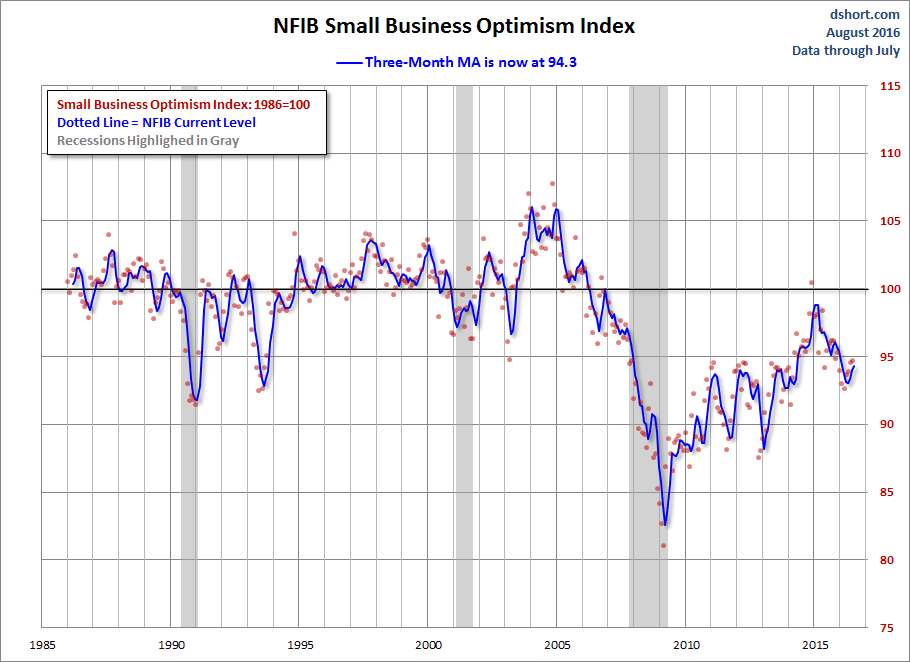The latest issue of the NFIB Small Business Economic Trends is out today. The update for October came in at 96.1, unchanged from the previous month. The index remains at the 29th percentile in this series.
Today’s number came in slightly below the Investing.com forecast of 96.4.
Here is the opening summary of the news release.
“The October NFIB survey gave no indication of a resurgence in growth in the small business sector with the Index remaining below the 42 year average of 98. The labor market components might have held at historically strong levels but this time owners reported no net growth in employment, which is a significant drop from reports in the previous four months.” —Bill Dunkelberg, NFIB Chief Economist
The first chart below highlights the 1986 baseline level of 100 and includes some labels to help us visualize that dramatic change in small-business sentiment that accompanied the Great Financial Crisis. Compare, for example the relative resilience of the index during the 2000-2003 collapse of the Tech Bubble with the far weaker readings following the Great Recession that ended in June 2009.

The average monthly change in this indicator is 1.3 points. To smooth out the noise of volatility, here is a 3-month moving average of the Optimism Index along with the monthly values, shown as dots.

Here are some excerpts from the report.
Labor Markets
Reported job creation came to a halt in October, with owners adding a net 0.0 workers per firm in recent months. Fifty-five percent reported hiring or trying to hire (up 2 points), but 48 percent reported few or no qualified applicants for the positions they were trying to fill. Fourteen percent reported using temporary workers, unchanged from September.
Credit Markets
Has the Fed’s zero interest rate policy and quantitative easing had a positive impact on Small Businesses?
Three percent of owners reported that all their borrowing needs were not satisfied, up 1 point from the record low reached in September. Thirty percent reported all credit needs met (unchanged), and 53 percent explicitly said they did not want a loan. For most of the recovery, record numbers of firms have been on the “credit sidelines”, seeing no good reason to borrow. Only 2 percent reported that financing was their top business problem. In the Great Recession, no more than 5 percent cited credit availability and interest rates as their top problem compared to as high as 37 percent in the Volcker era.













Leave A Comment